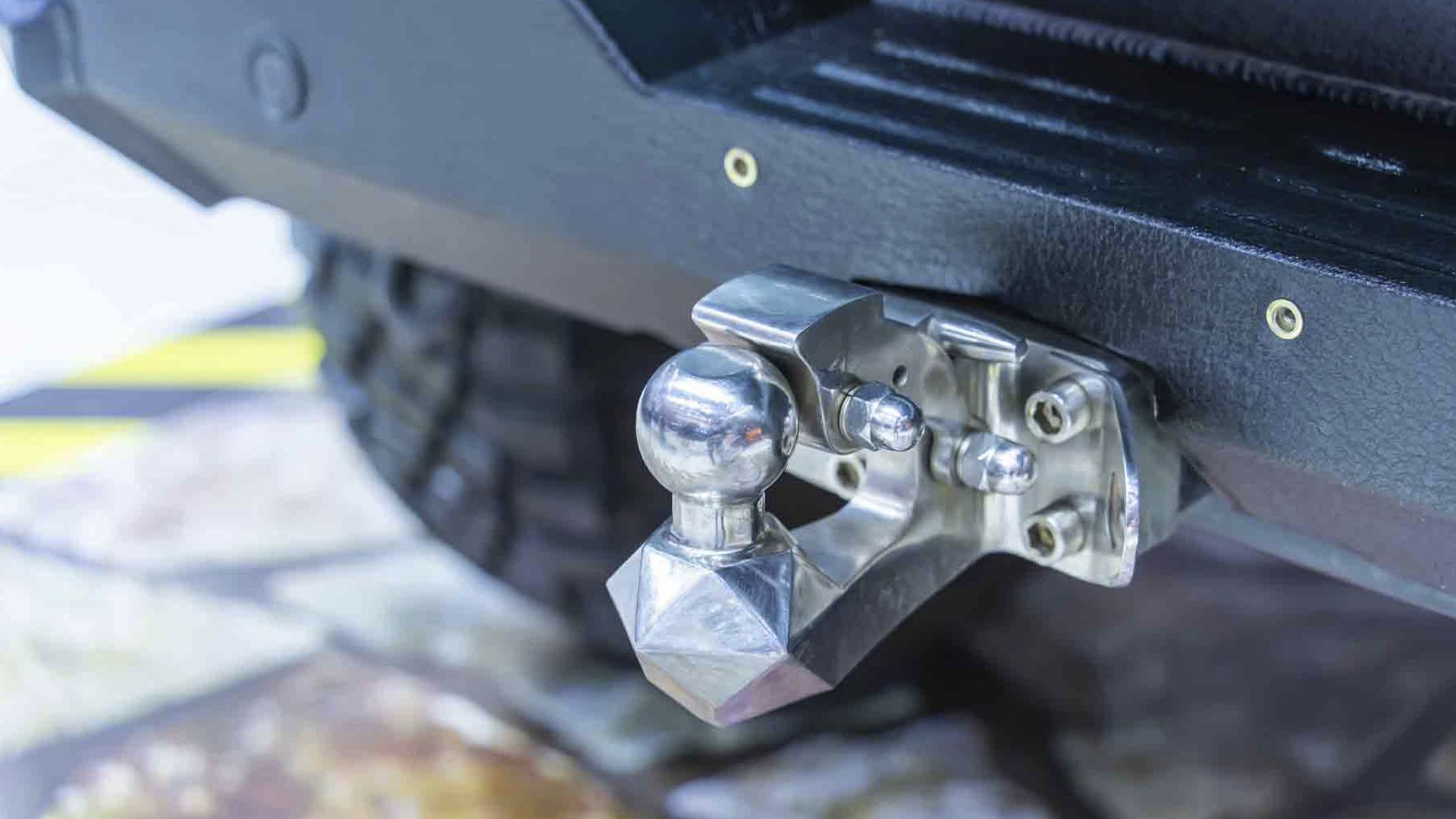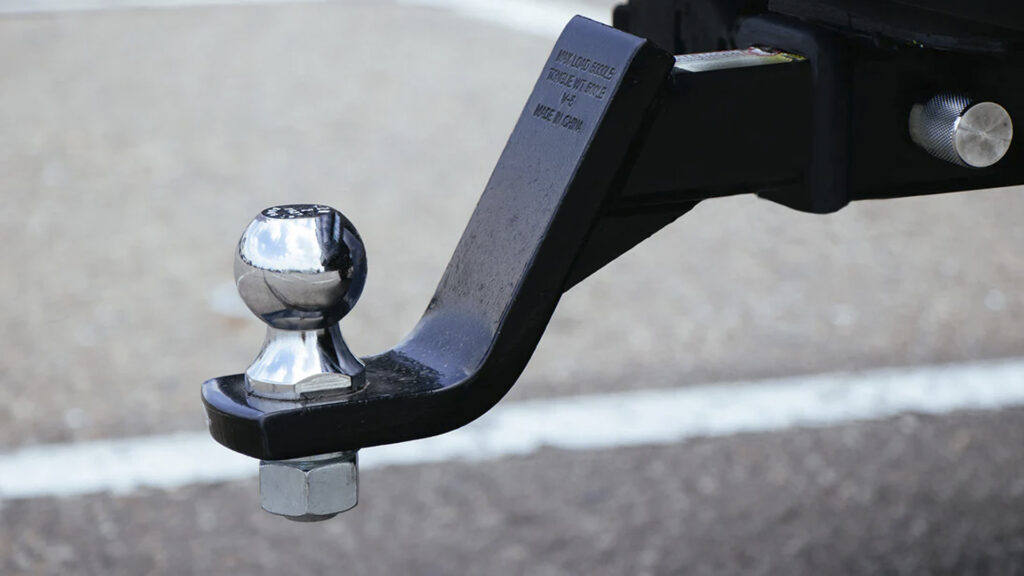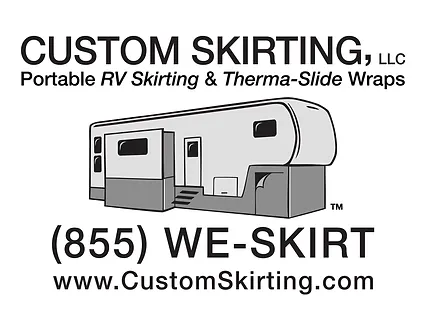
Essential Parts of a Trailer Hitch: Your Complete Guide
Table of contents
- The Trailer Hitch: The Foundation of Your Towing System
- Connecting Components: Ensuring a Secure Attachment
- Tow Vehicle Considerations
- Types of Trailers and Their Specific Hitch Requirements
- Additional Towing Equipment and Accessories
- Legal Requirements and Safety Regulations
- Maintenance and Care of Trailer Hitch Components
- Protect Your RV and Trailer Hitch with Custom Skirting
- Related Articles
Understanding the parts of a trailer hitch is essential for safe and efficient towing, as each component contributes to a secure and reliable connection between your tow vehicle and trailer. Whether you’re hauling a utility trailer, camper, or boat, proper knowledge of trailer hitch components ensures correct installation, optimal performance, and enhanced safety on the road. From the hitch receiver, which acts as the foundation of the system, to the safety chains that serve as a critical backup connection, every part has a specific role. Additional elements like the ball mount, trailer ball, and trailer wiring harness are equally important, ensuring smooth operation and proper synchronization of your vehicle and trailer.
This comprehensive guide will walk you through the parts of a hitch, their functions, and their interactions. By the end, you’ll have the knowledge to choose the right components for your needs, maintain them effectively, and tow with confidence, whether you’re handling a lightweight trailer or a heavy-duty camper.
The Trailer Hitch: The Foundation of Your Towing System
Receiver Hitch
The receiver hitch is the core component that connects the trailer to the tow vehicle. It is a metal framework mounted to the underside of your vehicle, providing a sturdy attachment point for towing accessories.
- Design and Sizes: The receiver hitch includes a square receiver tube where the ball mount is inserted. Common sizes include 1.25″, 2″, and 2.5″, depending on the towing capacity and vehicle type.
- Hitch Classes: Receiver hitches are categorized into five classes, each with a specific weight capacity:
- Class I: Up to 2,000 lbs
- Class II: Up to 3,500 lbs
- Class III: Up to 8,000 lbs
- Class IV: Up to 10,000 lbs
- Class V: Over 10,000 lbs
- Selecting the Right Hitch: Choose the receiver hitch based on your trailer’s weight and your vehicle’s towing capacity. Using a mismatched hitch can compromise safety.
Ball Mount
The ball mount is the detachable component that slides into the receiver hitch and holds the trailer ball.
- Parts: A ball mount consists of the shank (inserted into the receiver) and the platform where the trailer ball attaches.
- Fixed vs. Adjustable: Fixed ball mounts are single-height, while adjustable models allow height changes to align with your trailer coupler.
- Securing the Ball Mount: A hitch pin or hitch lock secures the ball mount in the receiver hitch, preventing it from loosening or detaching during transit.
Trailer Ball
The trailer ball is a spherical connector that forms the primary link between the tow vehicle and the trailer.
- Sizes: Common sizes include 1-7/8″, 2″, and 2-5/16″. Match the ball size to the trailer coupler to ensure compatibility.
- Installation: Proper installation and torque are critical for safety. An incorrectly secured trailer ball can lead to accidents.
Connecting Components: Ensuring a Secure Attachment

Trailer Coupler
The trailer coupler locks onto the trailer ball to connect the trailer to the tow vehicle.
- Adjustability: Some couplers are adjustable to fit different ball sizes.
- Innovations: New designs like the QuickPin™ Latch-less system simplify connection, providing greater ease of use and enhanced security.
Safety Chains
Safety chains act as a secondary connection in case the primary hitch fails.
- Installation: Cross the chains under the trailer tongue to prevent the trailer from dropping to the ground if it detaches.
- Chain Length: Ensure the chains are long enough to allow turning but not so long that they drag on the ground.
Trailer Wiring Harness
The trailer wiring harness connects the tow vehicle’s electrical system to the trailer’s lights and brakes.
- Types of Connectors: Common configurations include 4-pin, 5-pin, 6-pin, and 7-pin connectors.
- Purpose: The harness synchronizes the brake lights, turn signals, and running lights between the vehicle and the trailer. It’s also essential for powering trailer brakes on larger setups.
Tow Vehicle Considerations
Your tow vehicle’s capabilities significantly affect the performance and safety of your towing setup.
- Weight Capacity: Always know your vehicle’s towing capacity and ensure it exceeds the total weight of your trailer and its contents.
- Lowest-Rated Component: The maximum towing capacity is determined by the lowest-rated part of the system, whether it’s the hitch, ball mount, or safety chains.
- Maintenance: Regularly inspect your vehicle’s towing components, including the hitch receiver and wiring harness, to ensure they are in good condition.
Types of Trailers and Their Specific Hitch Requirements

Different trailers require unique hitch components:
- Utility Trailers: Often use lightweight ball mounts and Class I or II hitches.
- Travel Trailers: Require heavier-duty hitches, sway control, and possibly weight distribution systems.
- Boat Trailers: Need corrosion-resistant components due to exposure to water.
- Flatbed Trailers: May demand additional safety features like tie-down hooks or enhanced braking systems.
Additional Towing Equipment and Accessories
Enhance safety and performance with these accessories:
- Weight Distribution Hitches: Distribute the trailer’s weight across the tow vehicle and trailer axles for improved balance.
- Sway Control Devices: Minimize trailer sway caused by wind or uneven roads.
- Brake Controllers: Essential for trailers with electric brakes, these devices synchronize braking between the vehicle and trailer.
- Hitch Locks: Prevent theft by securing the ball mount or trailer coupler.
Legal Requirements and Safety Regulations
Towing laws vary by state, so it’s vital to comply with local regulations.
- Required Equipment: Many states mandate safety chains, functional trailer lights, and reflective markers.
- Weight Limits: Ensure your trailer weight does not exceed legal limits.
- Inspection: Periodically check your hitch components for wear and tear to avoid fines or accidents.
Maintenance and Care of Trailer Hitch Components
Proper care extends the lifespan of your trailer hitch components:
- Cleaning: Regularly clean the hitch receiver, ball mount, and trailer ball to prevent rust.
- Lubrication: Apply grease to the trailer ball and coupler to reduce friction and wear.
- Storage: Store detachable components like ball mounts and safety chains in a dry, secure location when not in use.
- Replacement: Promptly replace any damaged or worn parts to maintain towing safety.
Understanding the parts of a trailer hitch is key to ensuring a safe and efficient towing experience. From knowing what is a hitch receiver to recognizing the importance of safety chains and wiring harnesses, every component has a role in creating a secure towing system. By maintaining your trailer hitch components and adhering to safety guidelines, you can enjoy stress-free towing for years to come.
Protect Your RV and Trailer Hitch with Custom Skirting
Ensure Maximum Stability and Protection for Your Towing Setup!
Your trailer hitch and RV setup deserve the best care, both on the road and when stationary. Custom RV Skirting enhances stability, protects against harsh weather, and helps prevent rust or damage to critical components like the hitch receiver and safety chains.
With our No-Snap, No-Gap system, you’ll enjoy unparalleled protection from water, snow, and wind—keeping your entire setup safe and functional. Custom-fit for your RV, our skirting is easy to install and designed to move wherever your adventures take you.
Don’t let weather wear down your towing essentials—get Custom RV Skirting today and tow with confidence!
